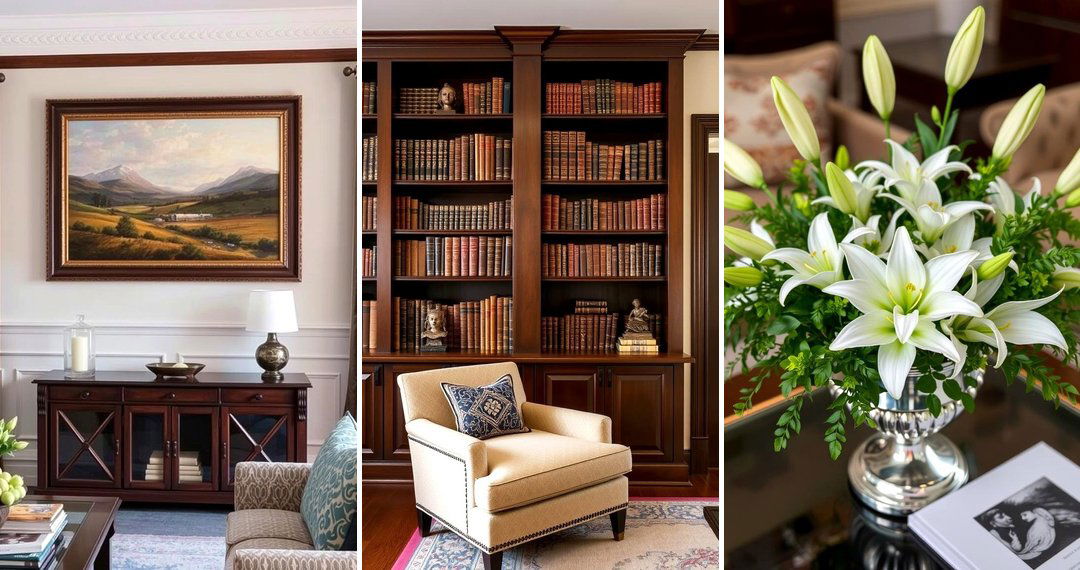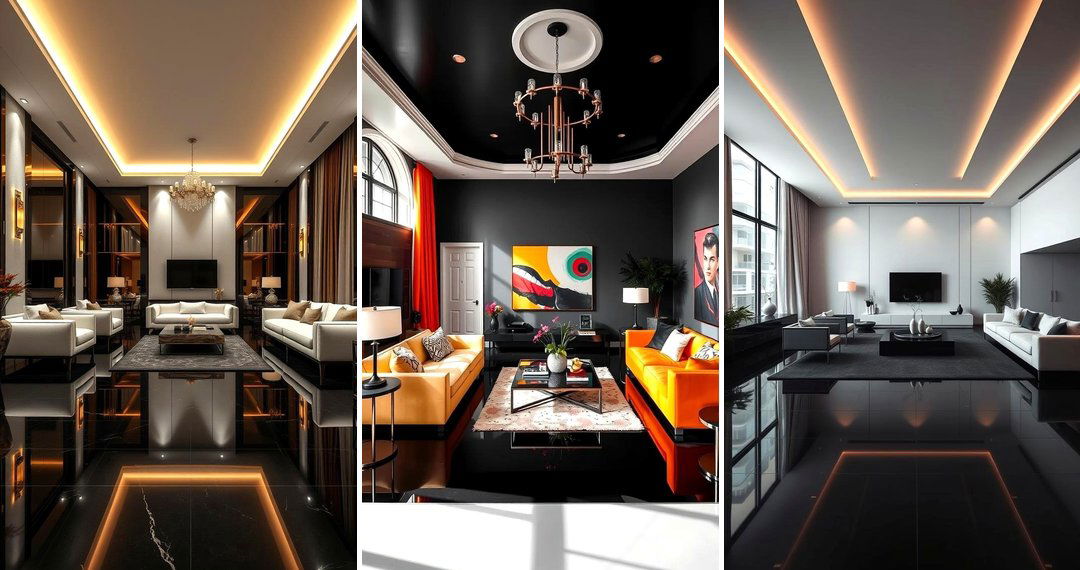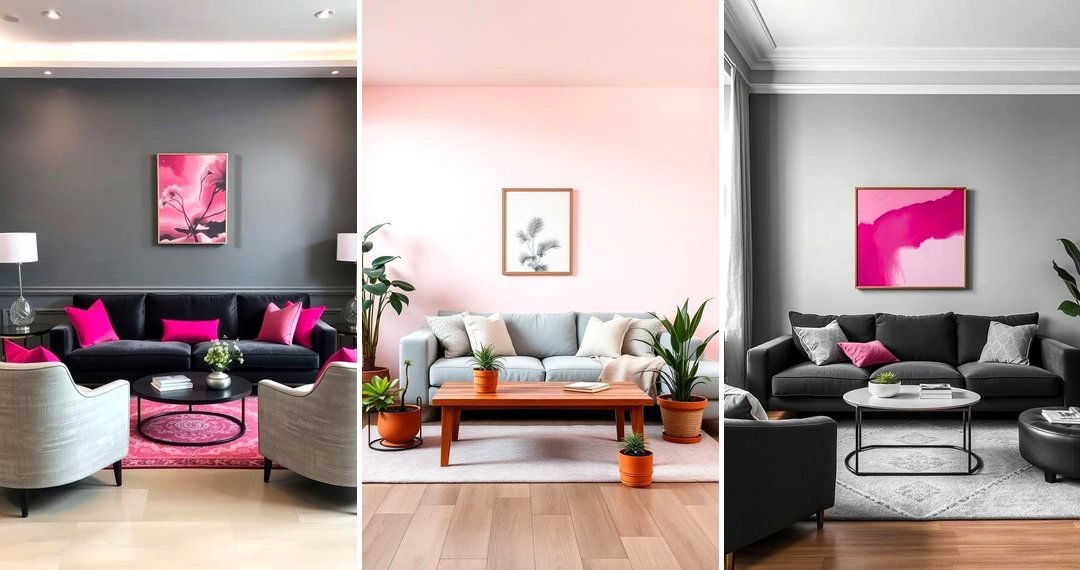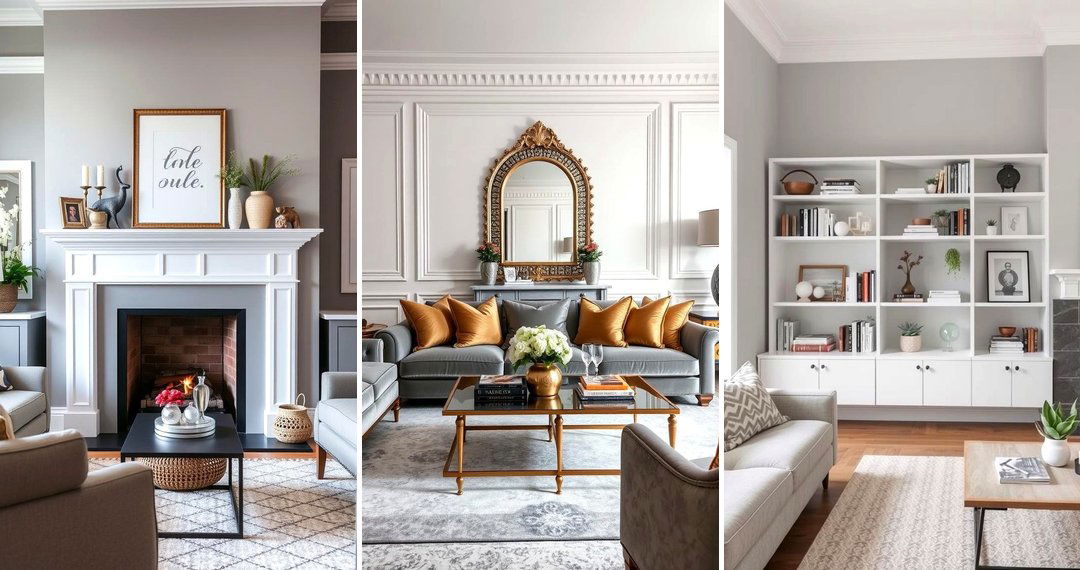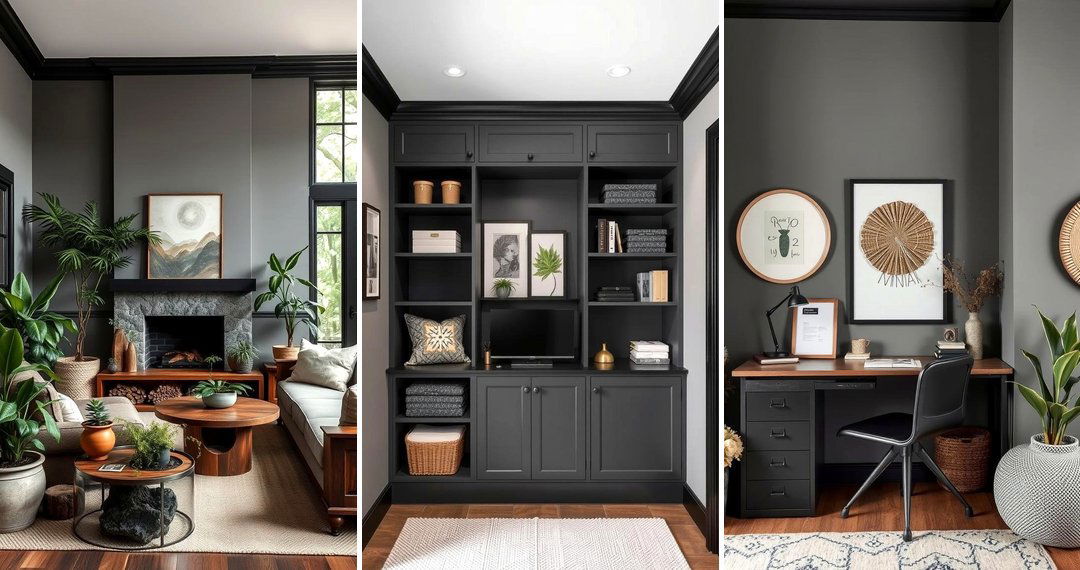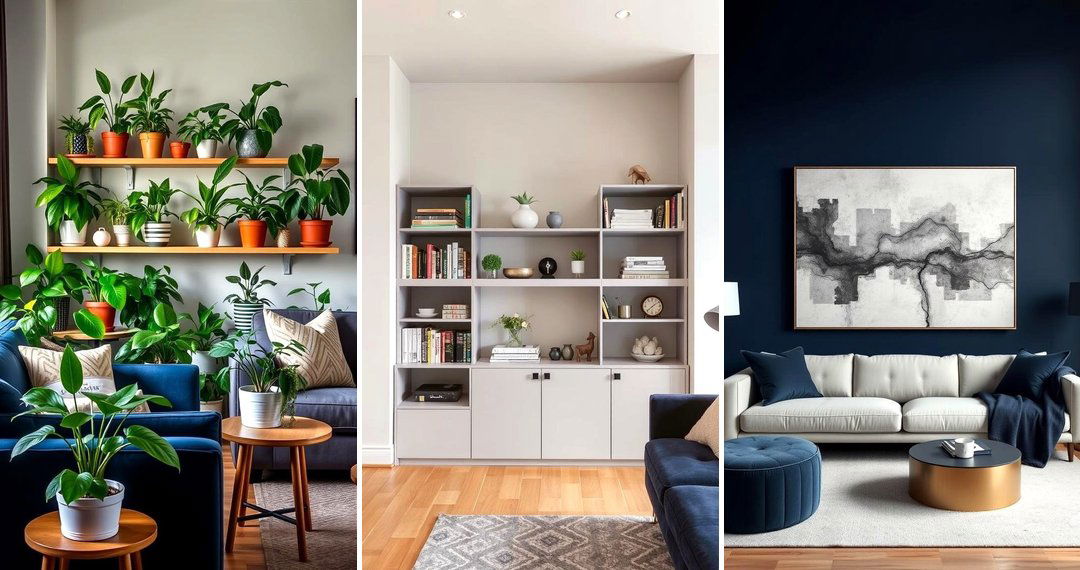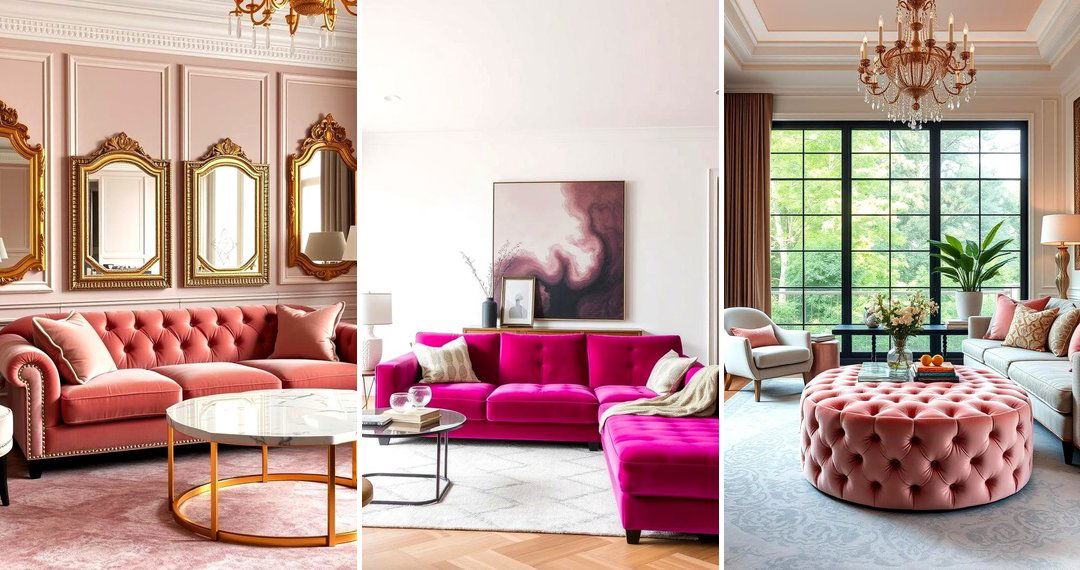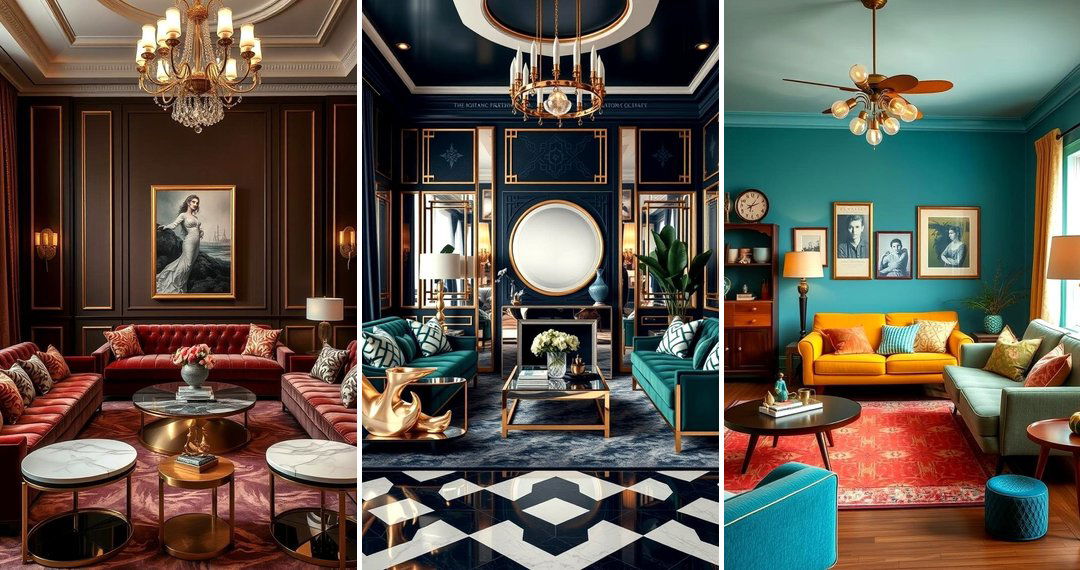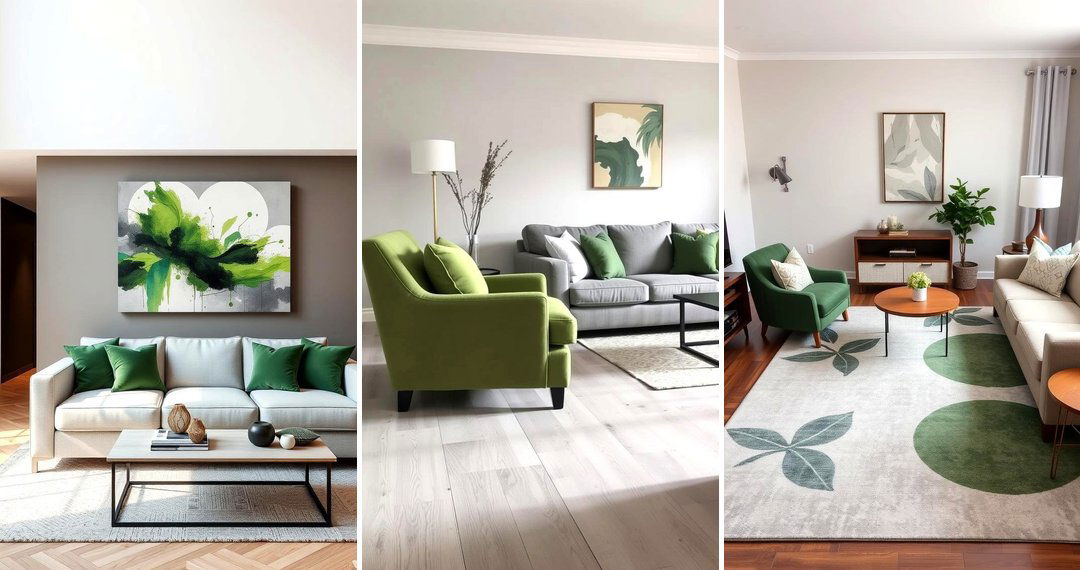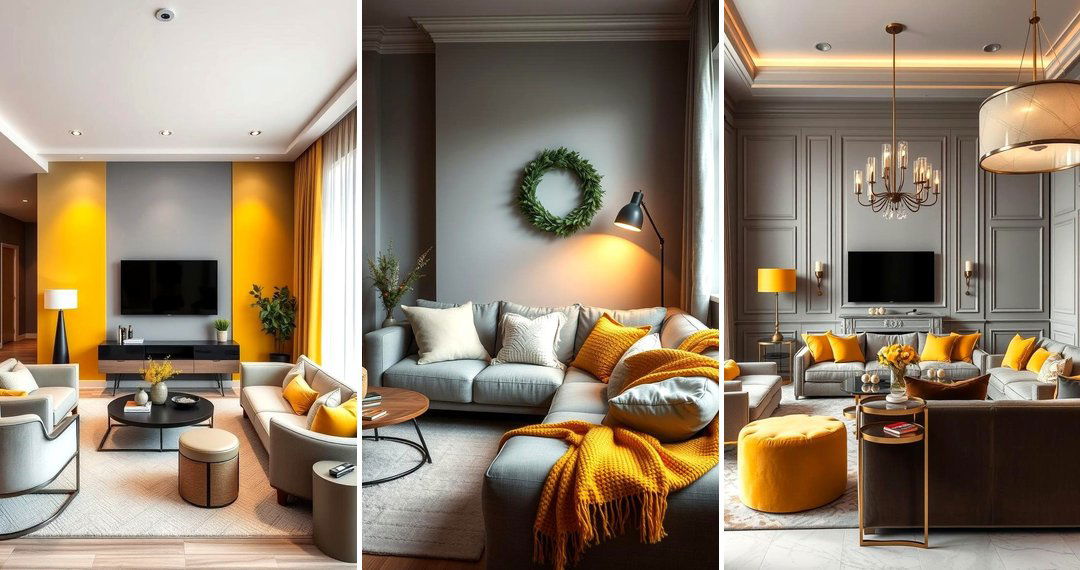Transitional living room design is where timeless elegance meets modern practicality, offering an inspiring blend of classic charm and contemporary simplicity. This approach transforms everyday spaces into comfortable, inviting retreats with refined details that effortlessly balance old and new. Every idea presented here reflects careful thought on functionality, style, and ease, empowering you to reimagine your home with confidence. Discover practical insights and creative tips that will elevate your space and invite you to explore the 24 Transitional Living Room Ideas.
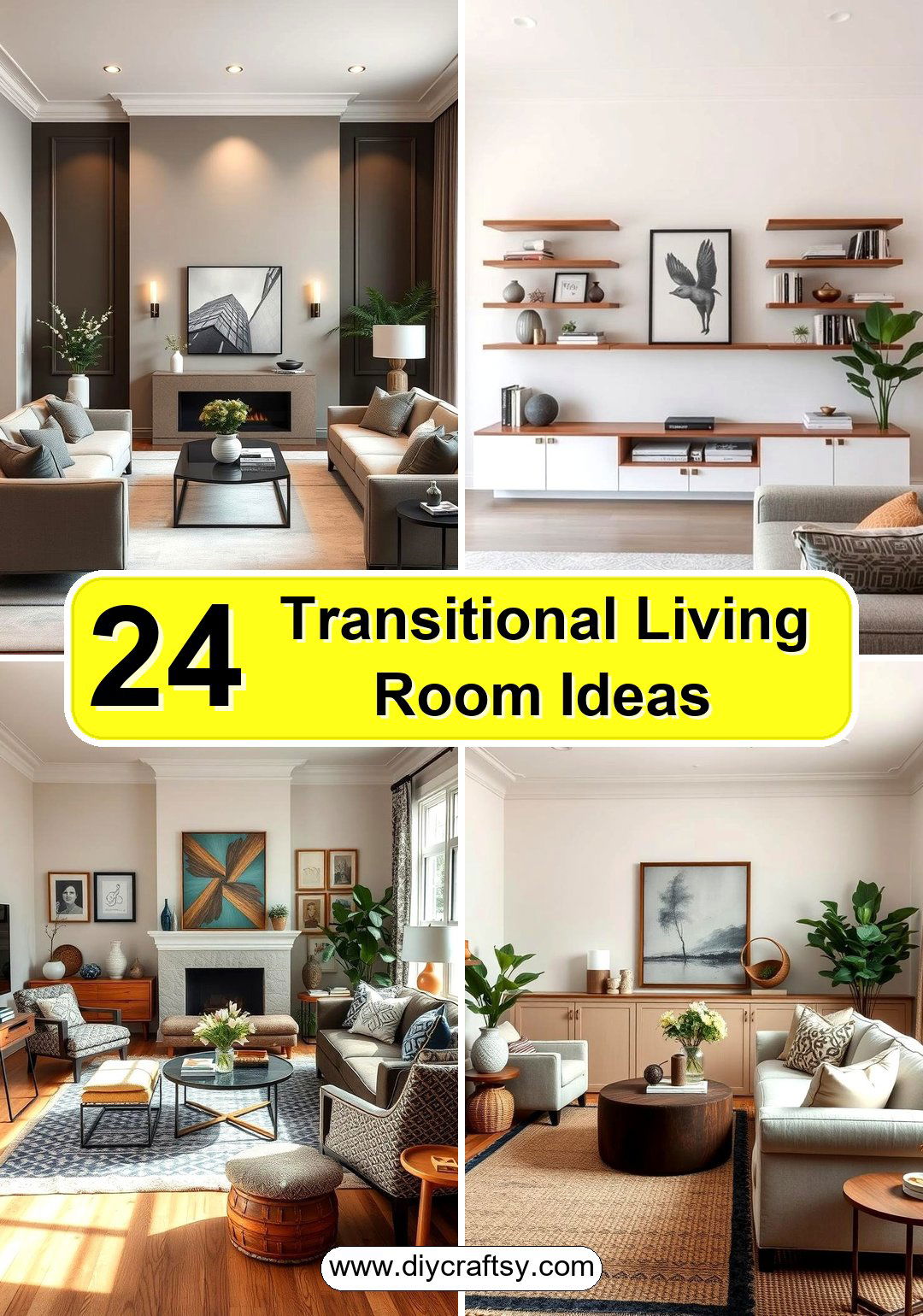
1. Neutral Color Palette Foundation
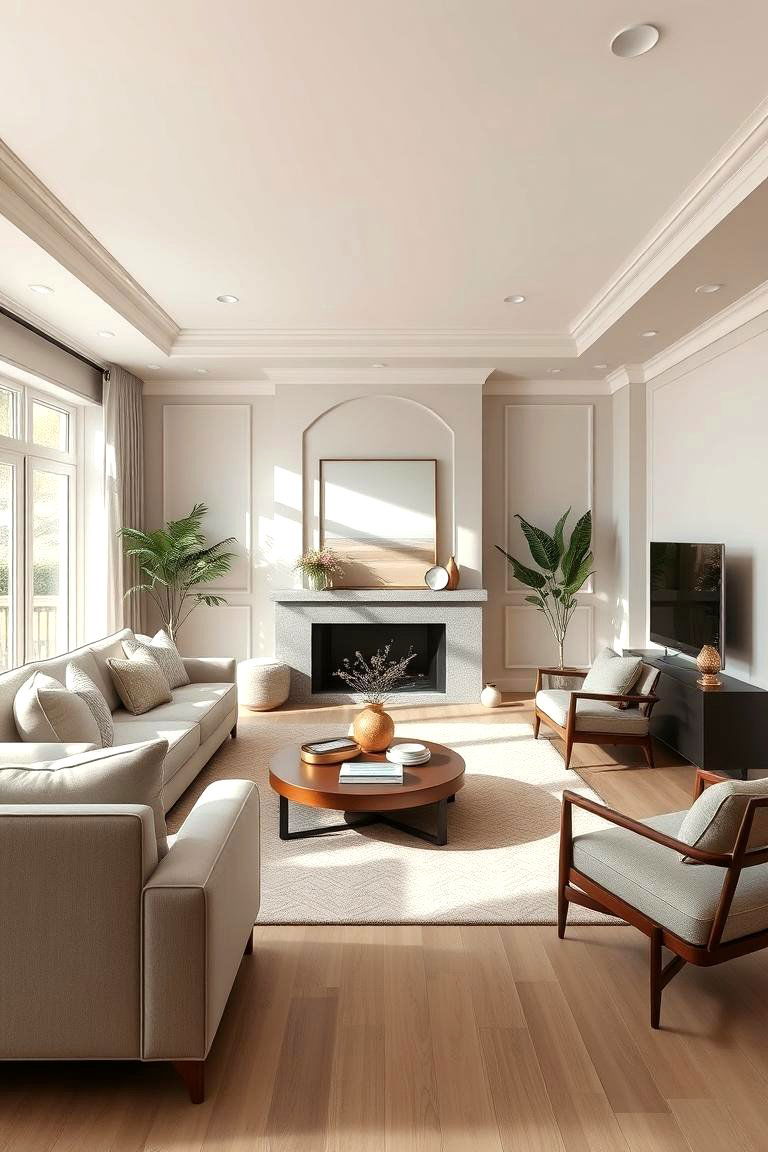
A calm and inviting neutral palette forms the perfect foundation for a transitional living room. The subtle hues of soft creams, warm beiges, and light grays create an ambiance of understated elegance that merges contemporary chic with timeless charm. This approach invites natural light to play with the space, accentuating textures and decorative accents. It also provides a versatile backdrop that lets vibrant accessories and art pop, ensuring each piece is highlighted without overwhelming the room.
2. Blending Traditional and Modern Furniture
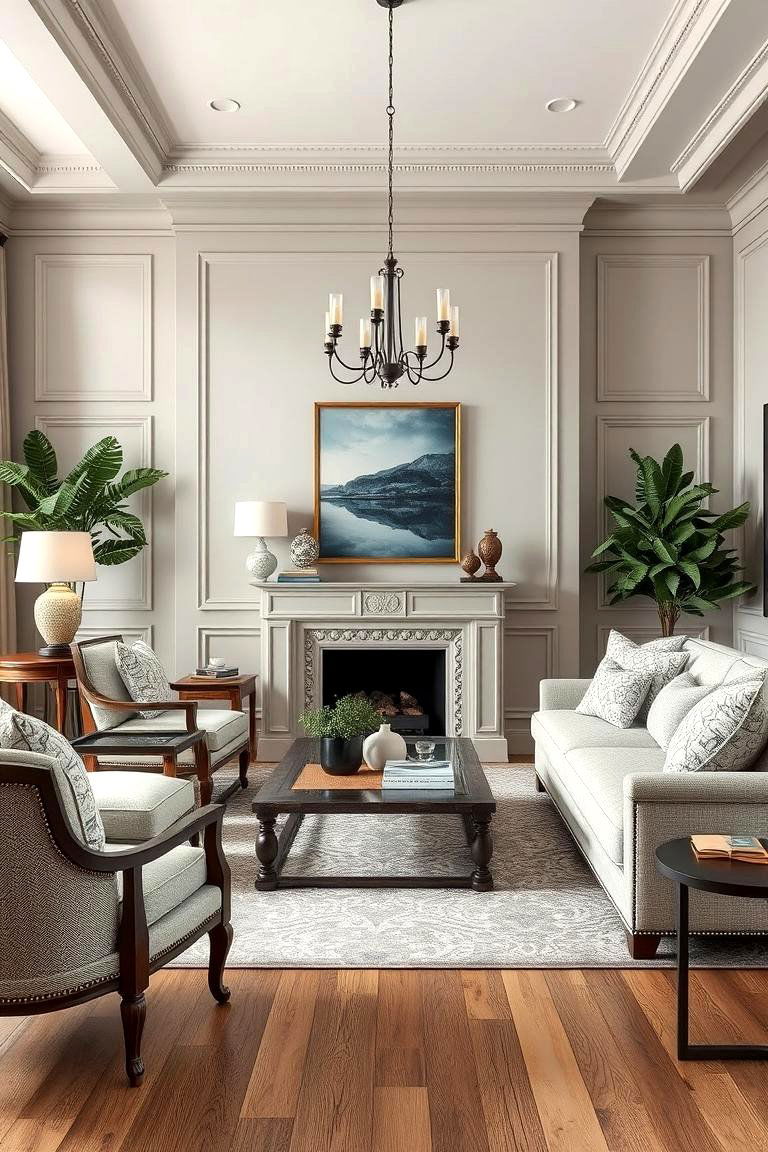
By combining classic elements with contemporary silhouettes, transitional living rooms achieve a balanced fusion of styles. The integration of traditional furniture pieces with modern design details creates a dynamic environment that feels both timeless and innovative. Vintage charm meets sleek functionality as elegant sofas, antique coffee tables, and modern lighting fixtures share the space harmoniously. This thoughtful blend provides visual interest and practical comfort, inviting residents to enjoy a room that feels curated yet relaxed.
3. Statement Lighting Fixtures
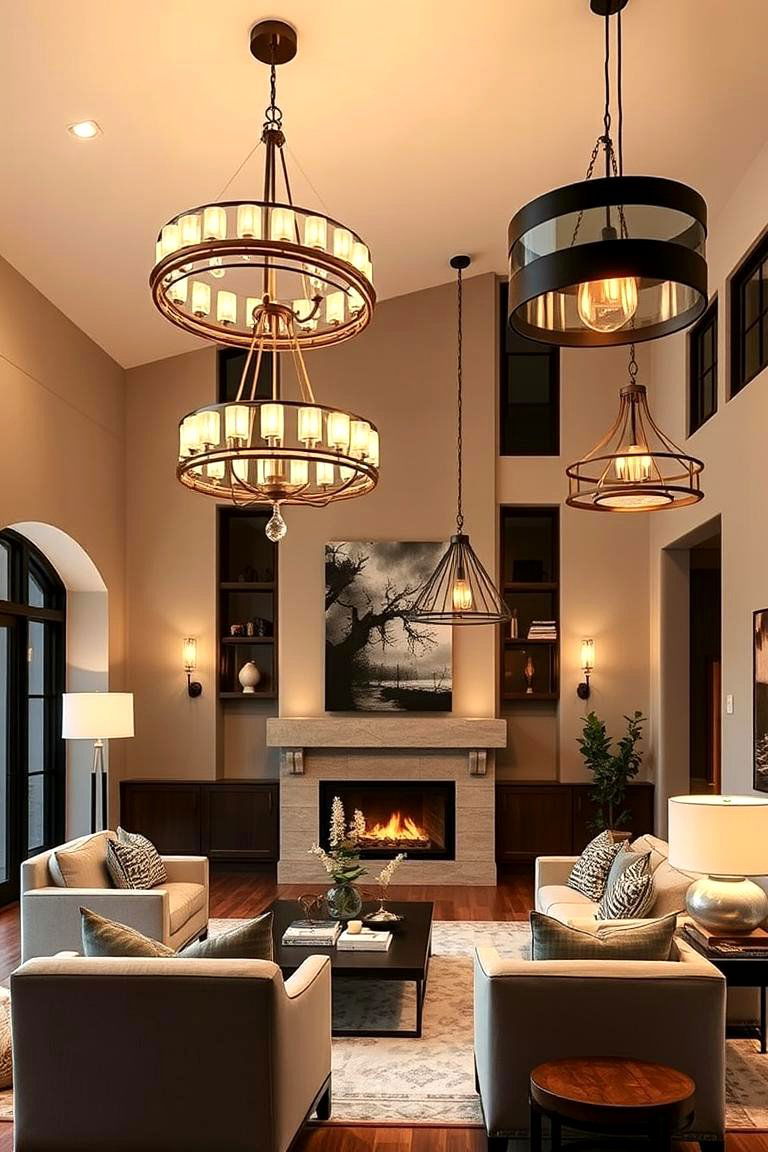
With eye-catching statement lighting fixtures, a transitional living room transforms into a radiant and inspiring space. Bold chandeliers or modern pendant lights serve as focal points that enhance both functionality and aesthetics. These lights add a dramatic flair and bring warmth to the room while complementing diverse furnishings. Their design bridges the gap between classic and contemporary, illuminating the space with a gentle glow that elevates everyday living and encourages engaging social gatherings.
4. Emphasizing Textured Accents
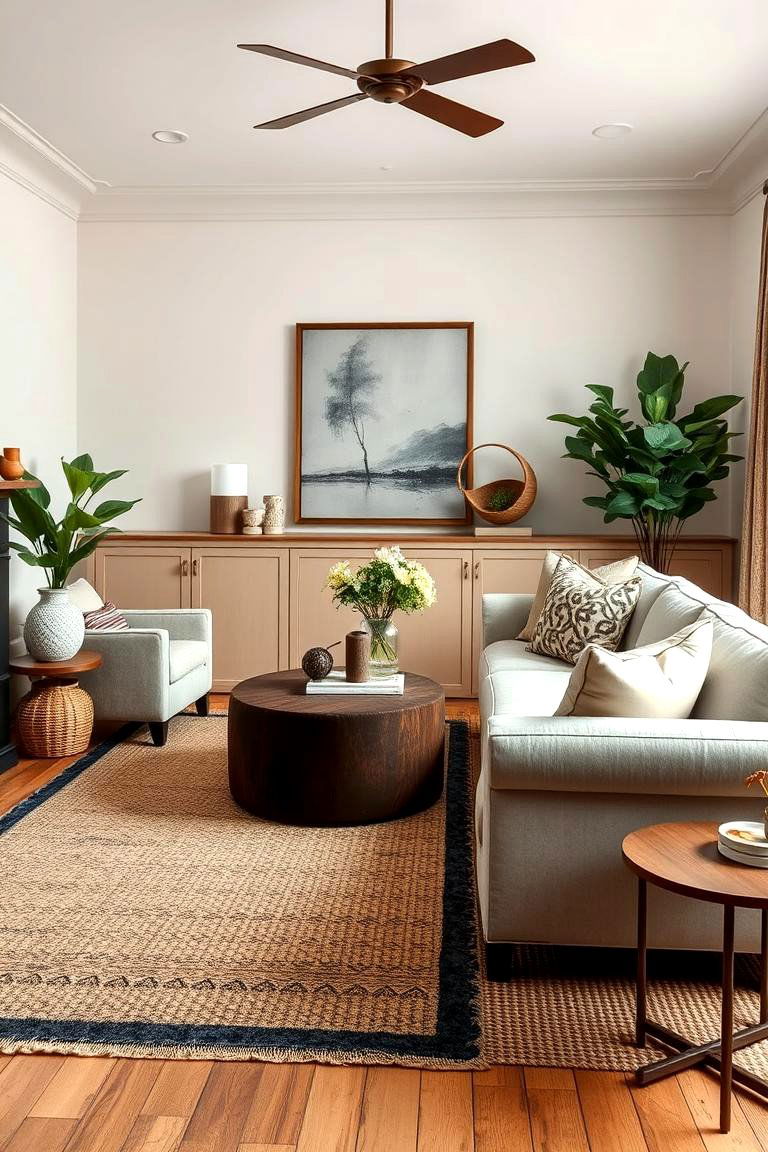
Another creative idea is emphasizing textured accents to add depth and warmth to your transitional living room. Rich fabrics, woven rugs, and tactile decorative accessories create an inviting, multi-dimensional space that invites touch and admiration. The interplay of smooth surfaces with coarse textures adds visual intrigue and contrast, making the room feel both elegant and approachable. Incorporating varied materials like velvet cushions, linen drapes, and wooden elements evokes sophistication while keeping the overall atmosphere relaxed and welcoming.
5. Natural Elements Integration
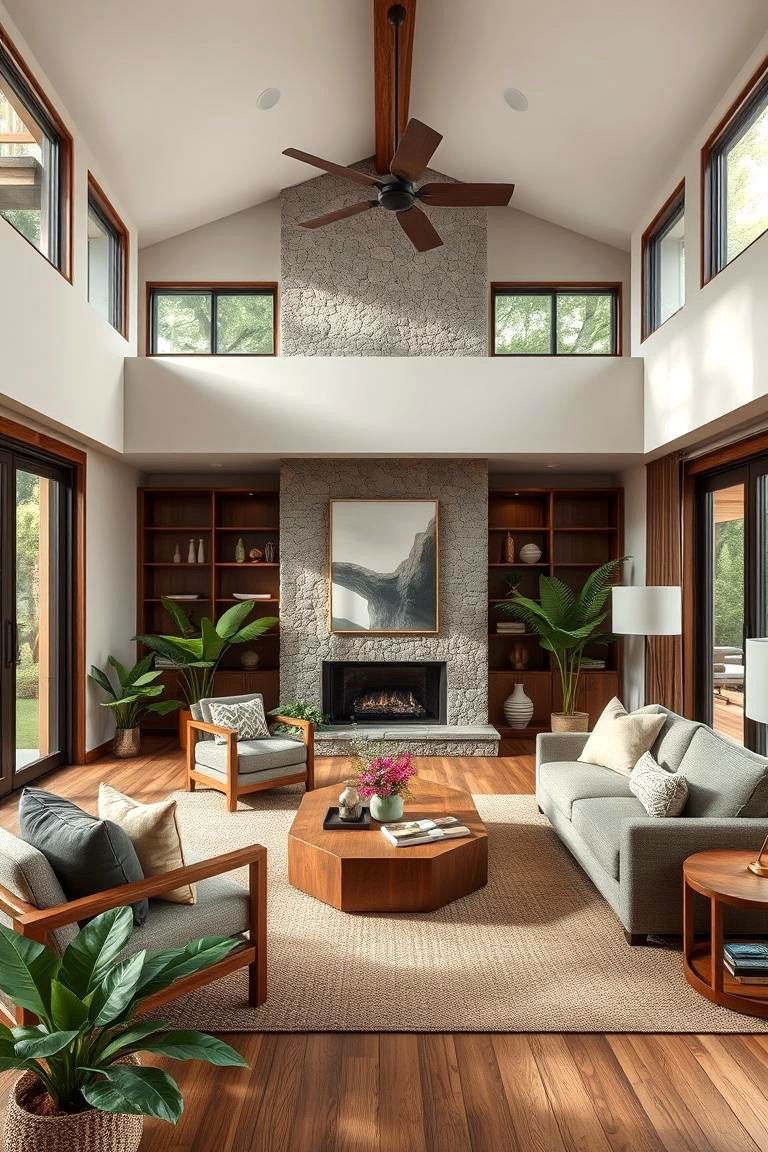
By integrating natural elements, your transitional living room can breathe life and vitality into its design. Incorporating organic materials such as wood, stone, and greenery brings the soothing essence of nature indoors. A touch of rustic charm through live plants, earthy textures, and natural fibers fosters a calming environment that balances modern minimalism with organic warmth. This connection to nature not only enhances visual appeal but also creates a serene atmosphere perfect for relaxation and creative inspiration.
6. Curated Art Display
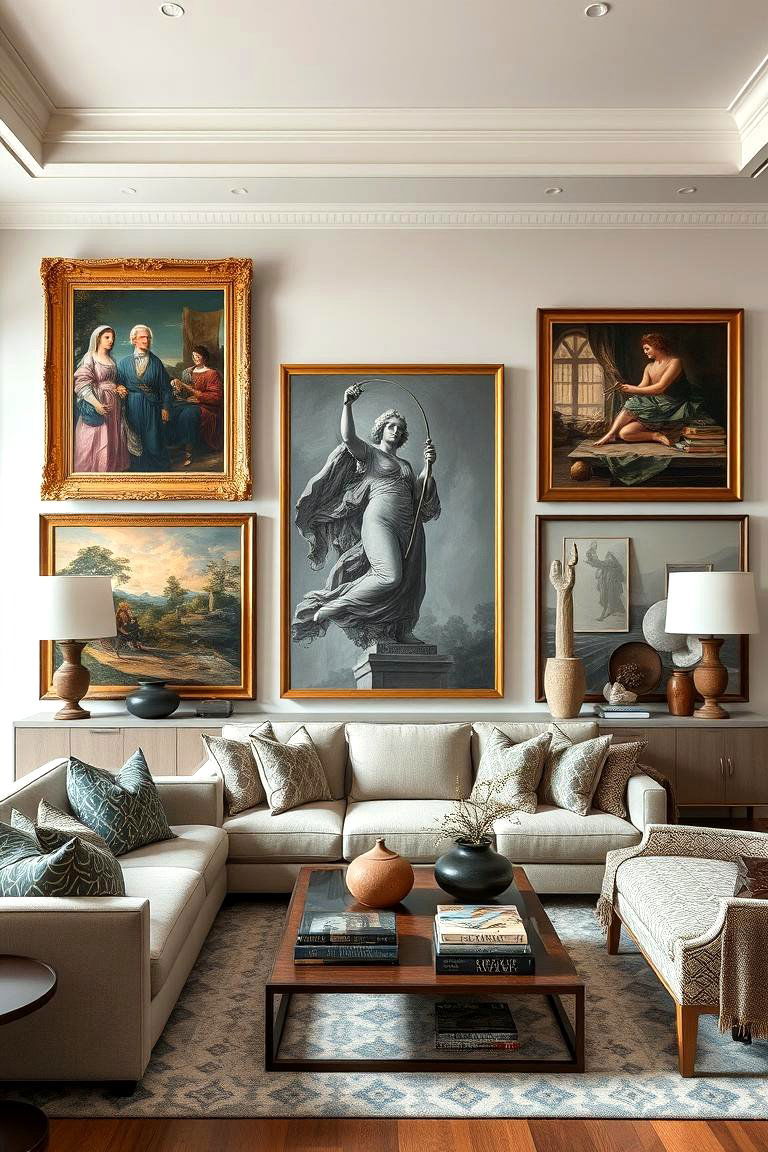
What better way to personalize your transitional living room than a curated art display? Art pieces, whether classic paintings or modern sculptures, serve as expressive focal points that elevate the room’s character. A thoughtful selection of artwork adds a creative dimension, inviting conversation and reflecting your personal taste. This artistic approach harmonizes diverse decor elements, blending subtle elegance with striking visuals that enliven the space and celebrate cultural sophistication.
7. Functional, Open Layouts

With a focus on functionality, open layouts are a hallmark of transitional living rooms. Spacious designs that minimize clutter promote a sense of freedom and ease. These layouts allow for smooth transitions between zones, such as seating areas and entertainment sections, creating a fluid yet defined space. By strategically positioning furniture and incorporating multipurpose elements, the room becomes adaptable to various activities and gatherings while maintaining a clean, modern aesthetic.
8. Comfortable & Versatile Seating
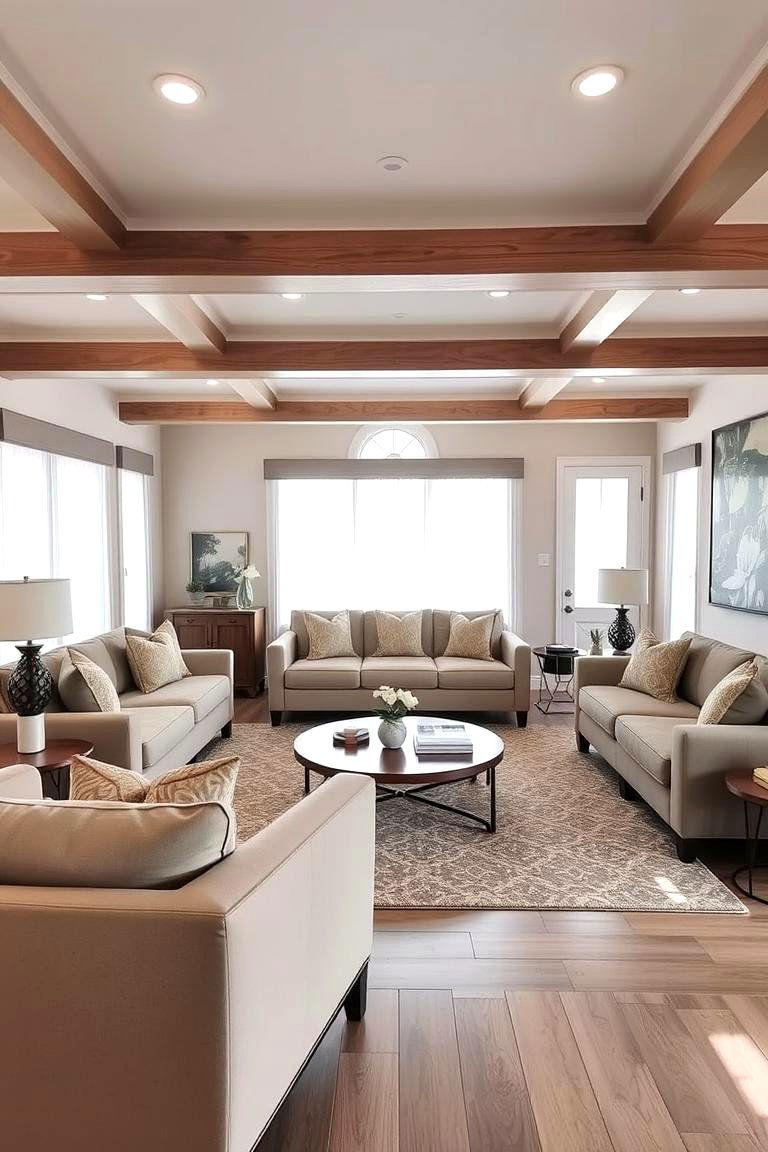
Consider investing in comfortable and versatile seating arrangements that elevate your transitional living room. Plush sofas, armchairs, and sectionals offer both style and function, inviting relaxation and extended conversations. The ability to mix and match seating options allows you to customize the space according to your needs. These pieces work harmoniously with other design elements, balancing contemporary simplicity with classic comfort for an intimate setting ideal for family time and social events.
9. Layered Textiles for Warmth
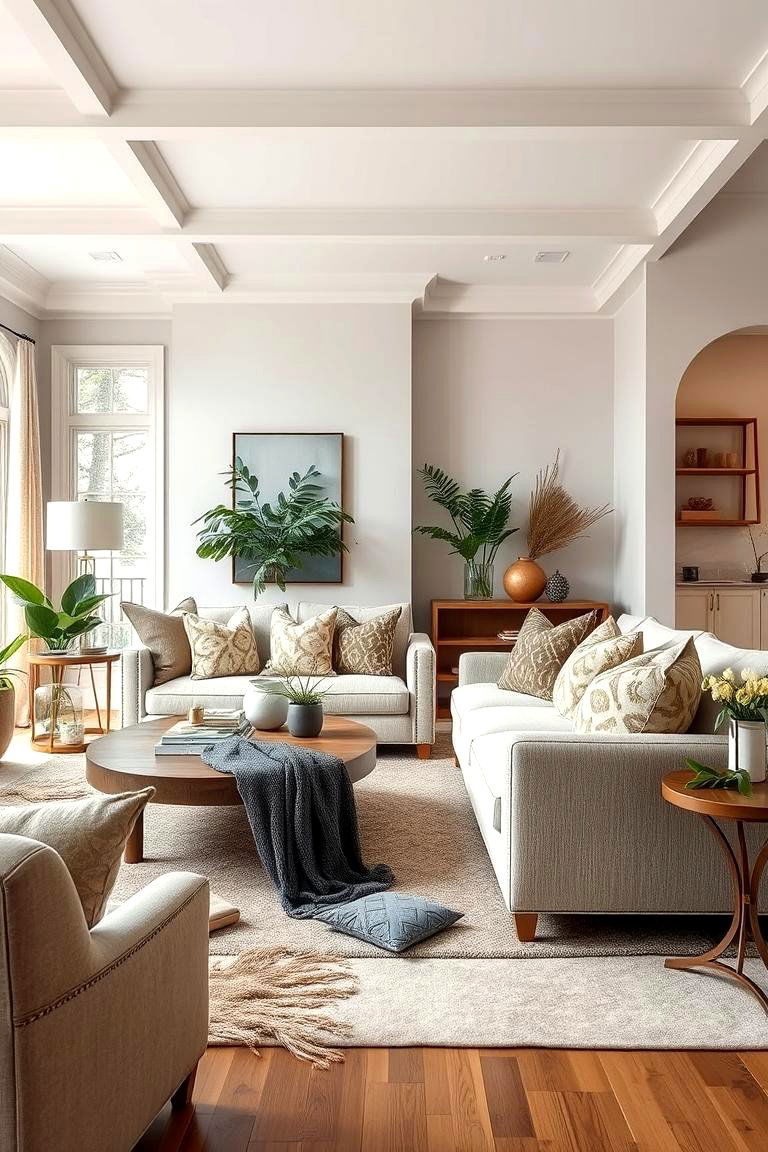
Take the opportunity to incorporate layered textiles, which bring warmth and dimension to a transitional living room. From soft throws and cozy blankets to decorative cushions and rugs, each textile element adds a unique tactile quality. The mix of patterns and textures creates a rich, inviting atmosphere that enhances the overall aesthetic. This method allows you to experiment with color and fabric, ensuring that each layer contributes to a harmonious and well-balanced environment.
10. Elegant Accent Walls
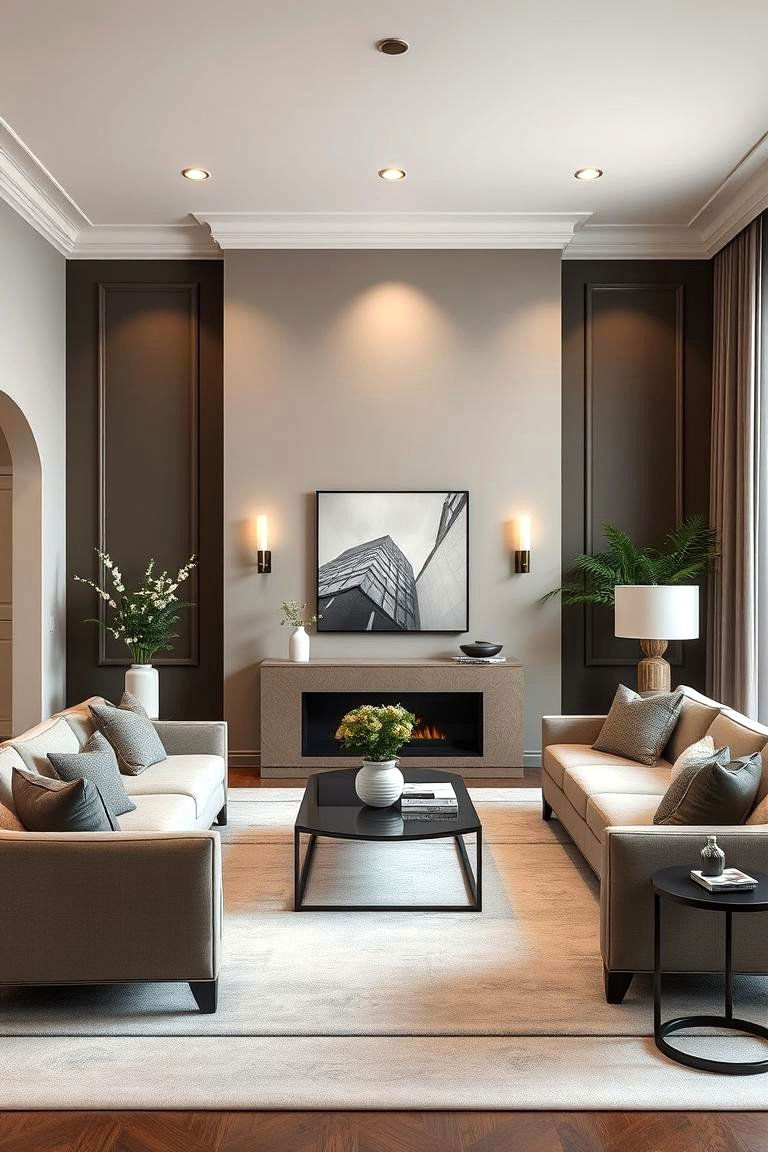
Interestingly, elegant accent walls serve as a focal point that transforms the mood of a transitional living room. A well-chosen accent wall in a complementary hue creates a striking contrast with neutral tones, infusing the space with character and depth. Whether opting for textured wallpapers or a bold, painted finish, this design element adds visual intrigue without overwhelming the room. The accent wall enhances decorative art and furnishings, maintaining a sophisticated balance that elevates the overall ambiance.
11. Floating Shelves & Storage
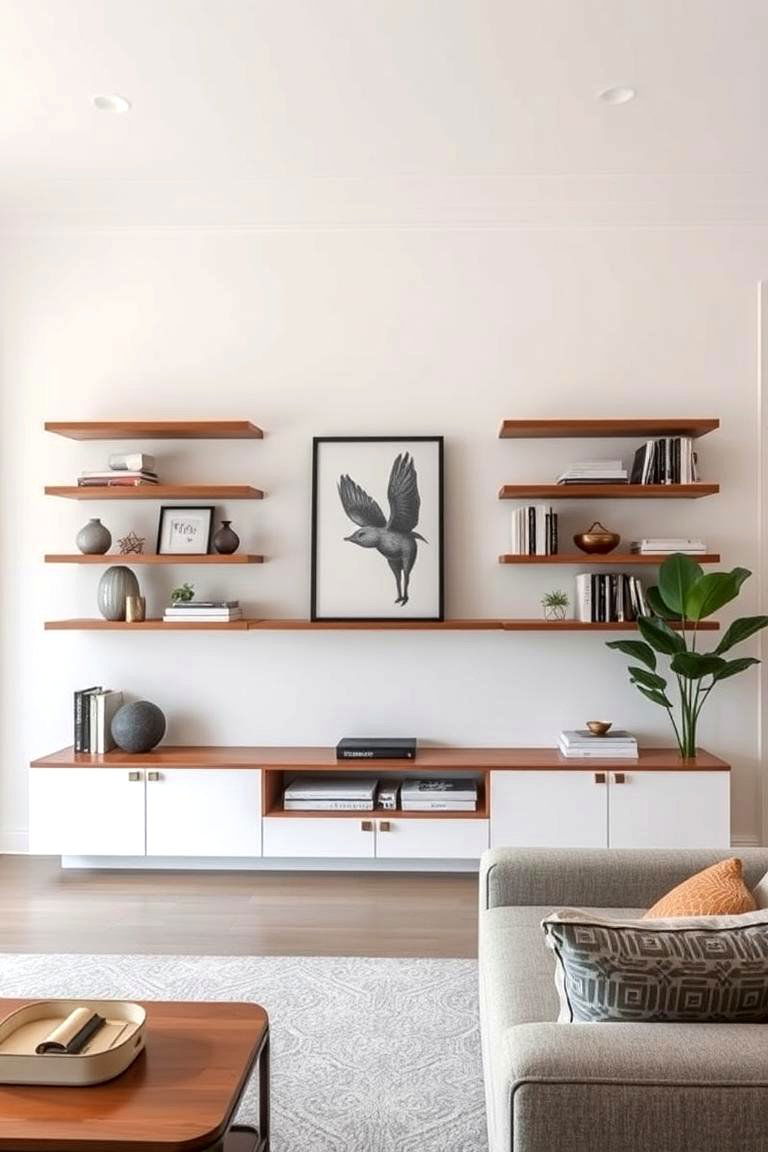
By incorporating floating shelves and smart storage solutions, a transitional living room becomes both stylish and clutter-free. These sleek installations not only display treasured decor and books but also free up floor space, enhancing the room's sense of openness. The minimalist design of floating shelves provides a clean, modern look that complements traditional furniture. Their versatility allows for creative arrangements, adding a personalized touch while ensuring every item finds its place in a harmonious setting.
12. Seamless Indoor-Outdoor Connection
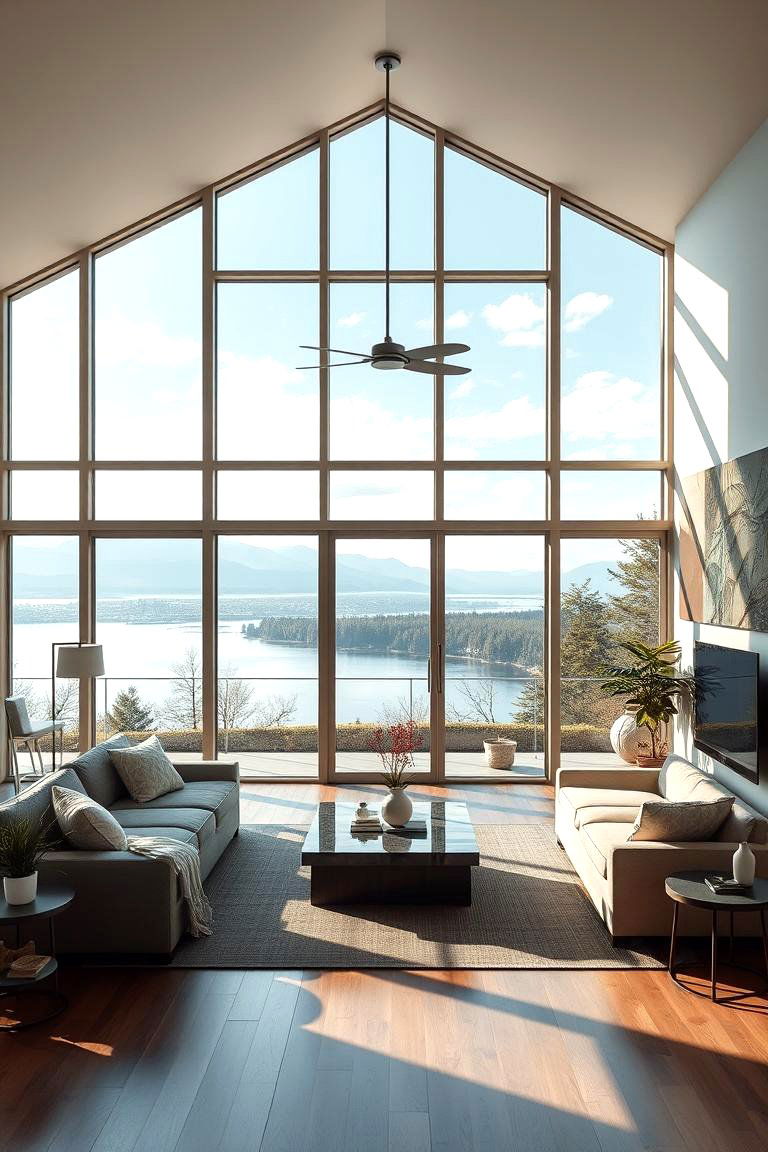
By embracing a seamless indoor-outdoor connection, transitional living rooms blur the boundaries between interior comfort and nature’s beauty. Large windows and sliding glass doors invite abundant natural light and picturesque views into the room, enhancing the sense of space. This design strategy creates a fluid transition from inside to out, while organic textures and natural materials celebrate both modern design and the calming influence of the outdoors, fostering a refreshing retreat for everyday relaxation.
13. Subtle Pattern Play
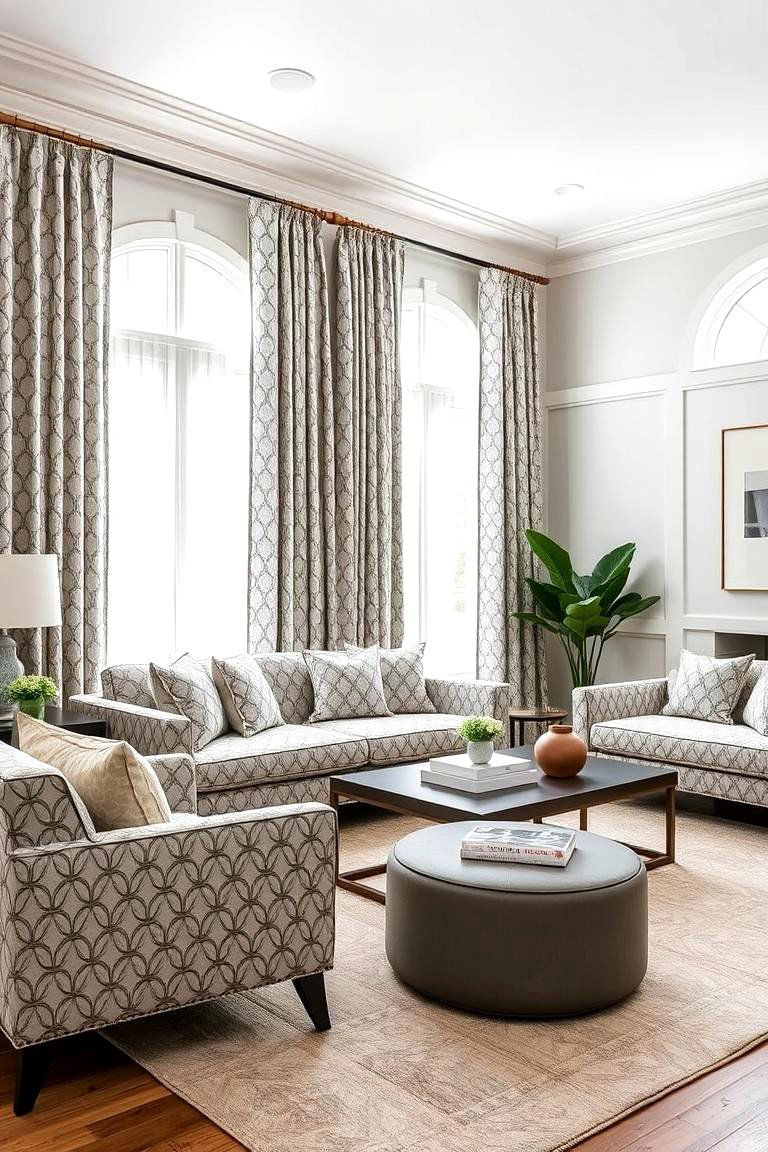
Although subtle, pattern play can inject personality into a transitional living room without overwhelming the space. Delicate geometric shapes, soft florals, or understated stripes add visual interest to upholstery, curtains, and area rugs. This approach carefully balances simplicity with artistic flair, ensuring that patterns enhance rather than distract from the overall design. The harmonious blend of muted colors and soft patterns contributes to an inviting atmosphere that feels both modern and timeless, sparking creative expression.
14. Mixed Materials Harmony
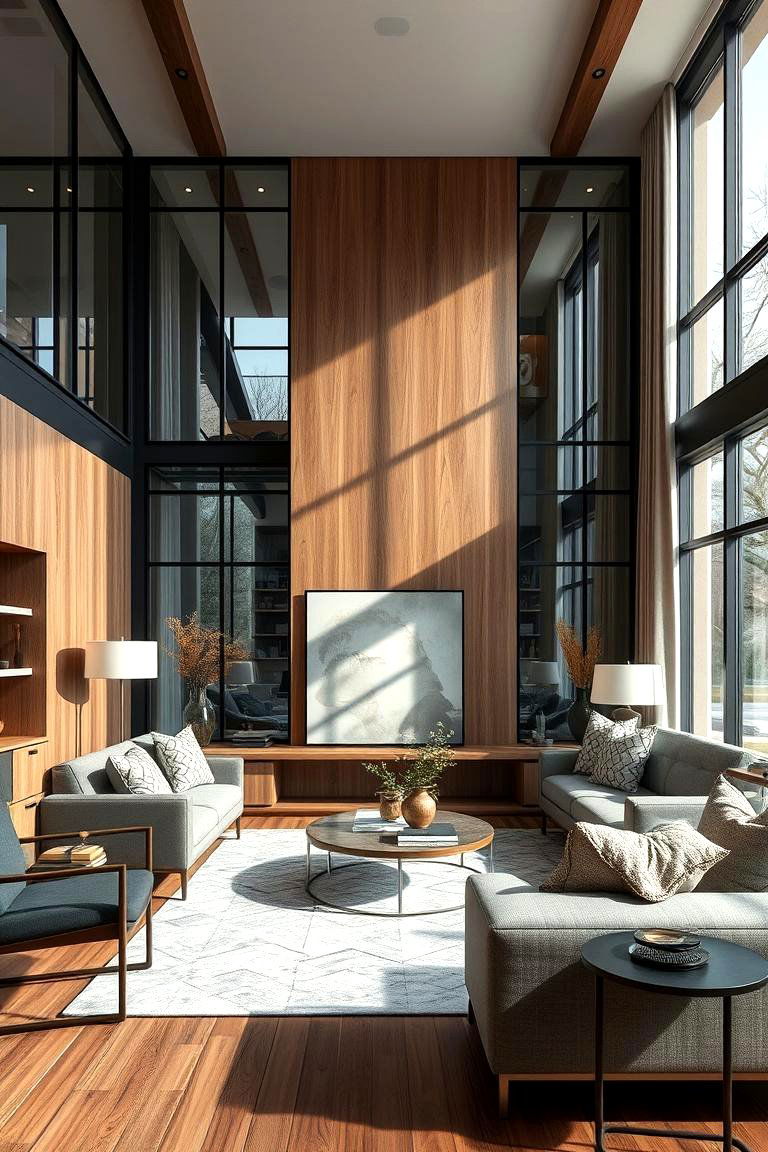
With a keen eye for detail, mixing materials harmoniously is essential for a transitional living room. Combining elements like glass, metal, wood, and fabric creates a layered effect that adds depth and interest. The interplay of different textures, finishes, and weights offers a sophisticated look that feels both contemporary and classic. Each material brings its own character, resulting in a balanced composition that highlights the best of both eras and encourages experimentation with contrasting elements.
15. Understated Minimalism
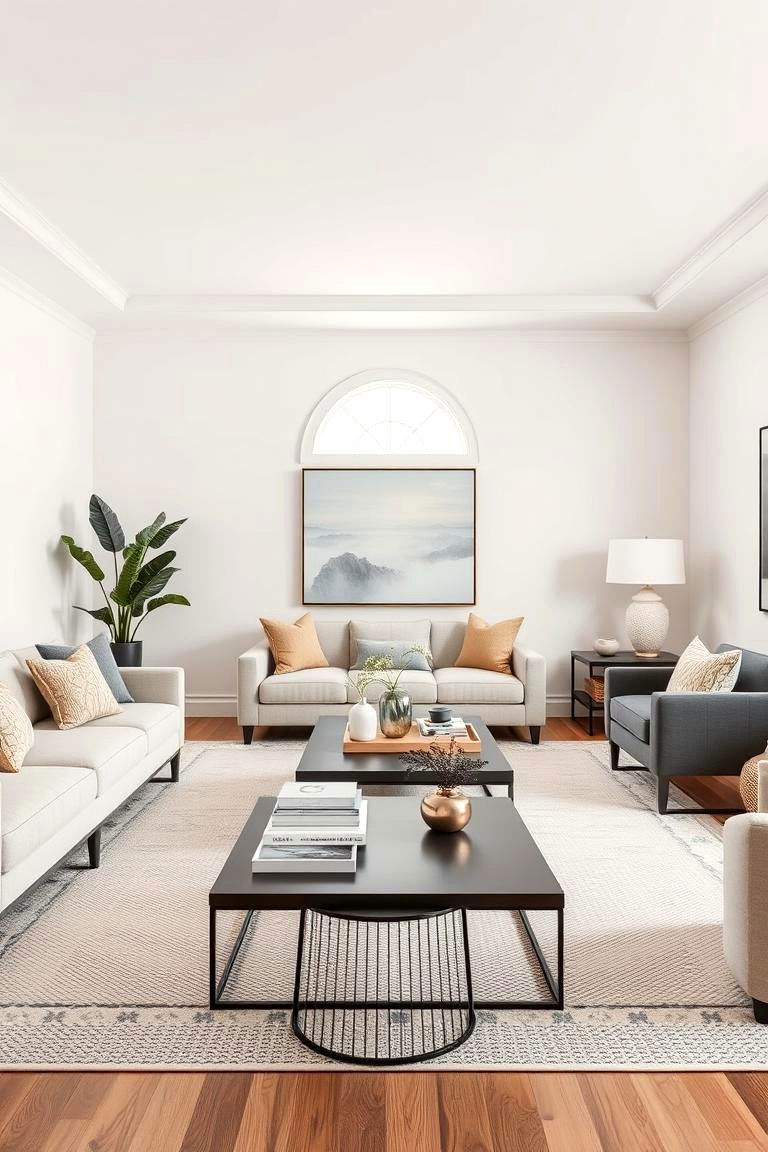
Surprisingly, understated minimalism forms a compelling approach to transitional living room design. By stripping back excess clutter and focusing on essential elements, you create a calm, organized environment that exudes elegance. The simplicity of clean lines, neutral tones, and functional furniture provides a timeless appeal that resonates with modern sensibilities. This design philosophy emphasizes quality over quantity, allowing each piece to shine while creating a sophisticated space that is both refreshing and inviting.
16. Custom Built-in Solutions
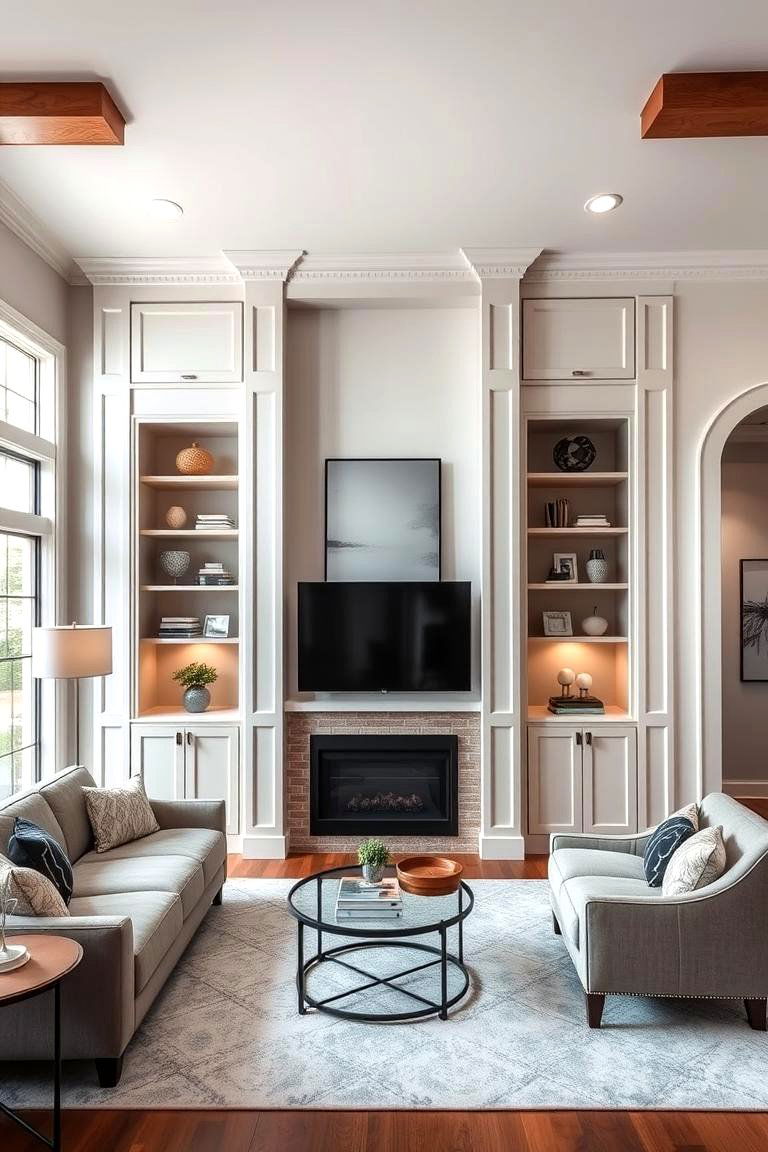
Take advantage of custom built-in solutions to enhance the functionality of your transitional living room. Designed to fit seamlessly within the architecture, built-ins such as shelving units and entertainment centers optimize space without sacrificing style. They provide a sleek, integrated look that balances modern efficiency with classic charm. Custom cabinetry and storage offer personalized organization, ensuring every item finds its proper place in a refined, orderly environment that is as practical as it is elegant.
17. Contemporary Fireplace Focus
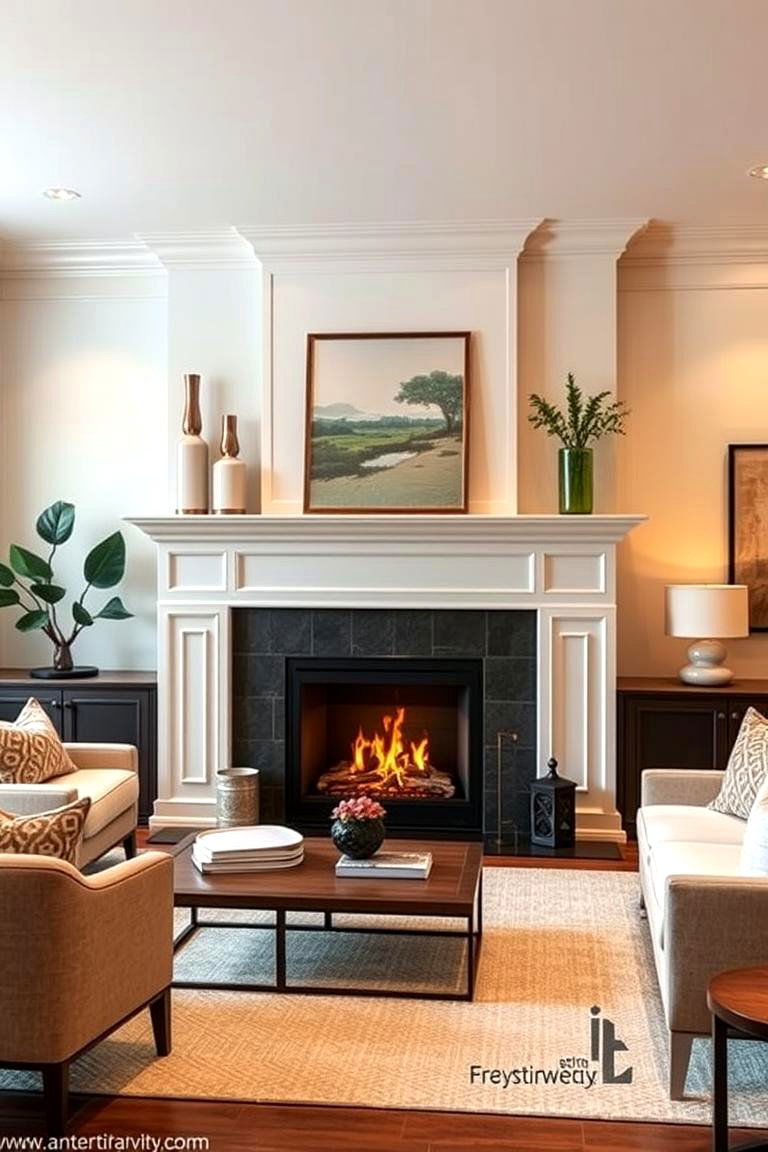
At the heart of many transitional living rooms, a contemporary fireplace becomes a statement piece that anchors the space. This modern twist on a classic element offers both warmth and visual appeal, creating a cozy yet refined focal point. Surround it with sleek mantel designs and minimalist accessories to enhance its impact without overpowering the room. The fireplace provides comfort and serves as a dynamic centerpiece, embodying the true spirit of transitional design through a blend of modern lines and traditional warmth.
18. Eclectic Decor Balance
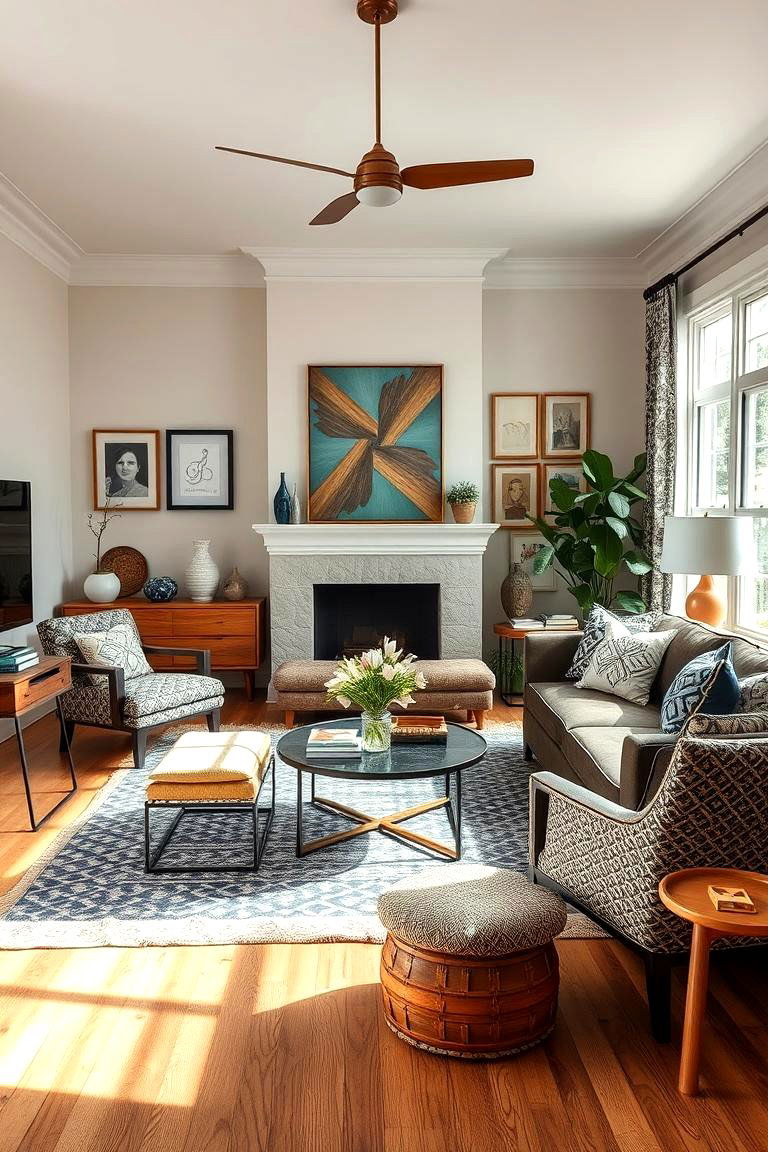
With a blend of contrasting elements, eclectic decor balance brings a unique flavor to a transitional living room. Diverse patterns, colors, and textures coexist in a curated manner that celebrates individuality and timeless charm. This balanced mix allows for unexpected combinations that create an inviting yet sophisticated environment. Pairing vintage finds with contemporary pieces gives the room dynamic character and personal flair, ensuring that every decorative element contributes to a cohesive, refined aesthetic.
19. Sustainable, Eco-friendly Choices
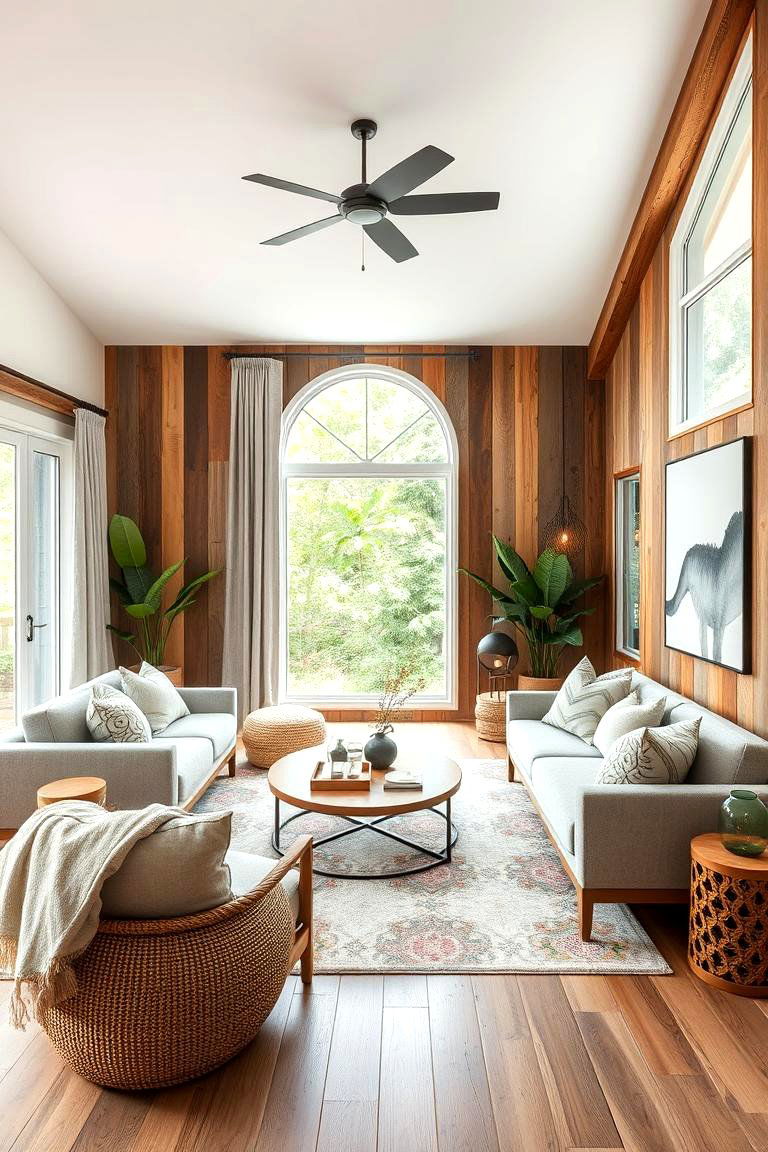
With an increasing focus on the environment, sustainable, eco-friendly choices are transforming transitional living rooms. Incorporate reclaimed wood, energy-efficient lighting, and organic textiles to create a design that respects nature while promoting longevity. This approach reduces environmental impact and infuses the room with natural, earthy charm. The use of sustainable materials results in a space that is stylish, responsible, and ideal for those who value durability and green living, nurturing both aesthetics and a healthier lifestyle.
20. Vintage Modern Fusion
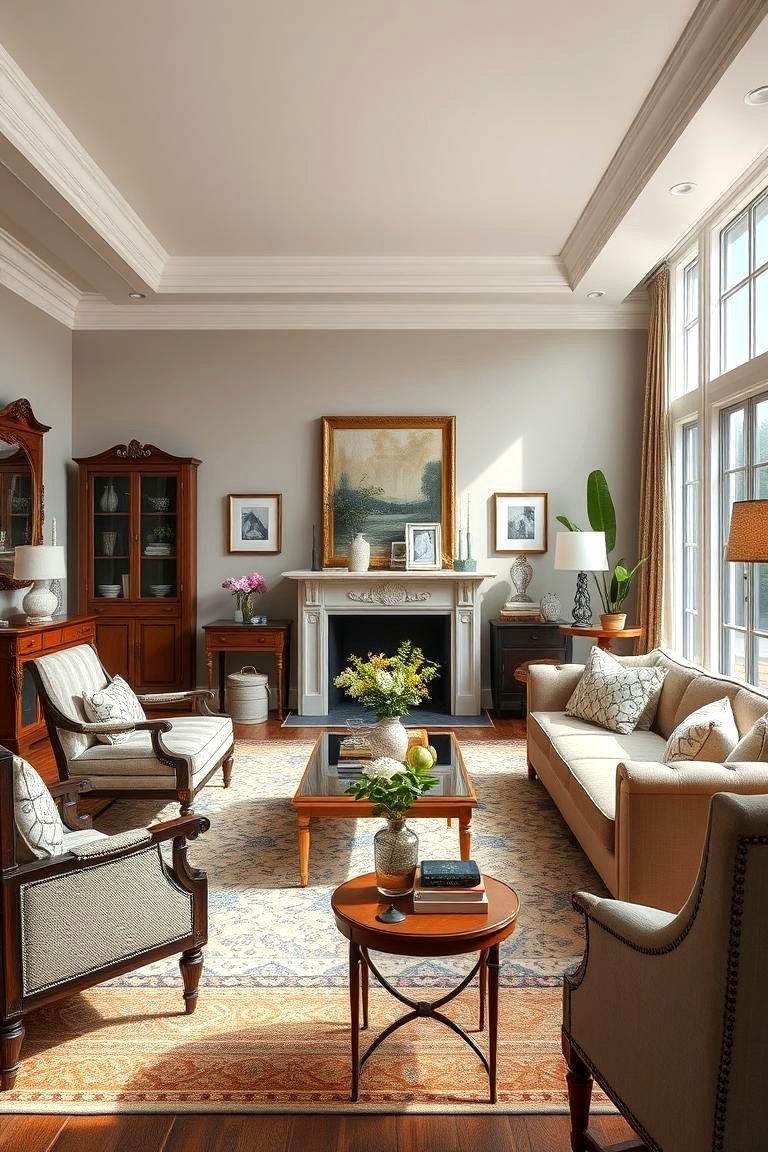
Another striking idea is the vintage modern fusion, where retro elements meet contemporary design. Incorporating antique furniture pieces alongside sleek, modern accessories creates a visually engaging space that feels both nostalgic and fresh. This fusion emphasizes character through curated vintage finds paired with clean, modern lines. The resulting balanced environment pays homage to the past while embracing current trends, offering a living room that is uniquely inviting and rich with timeless style.
21. Integrated Technology Features
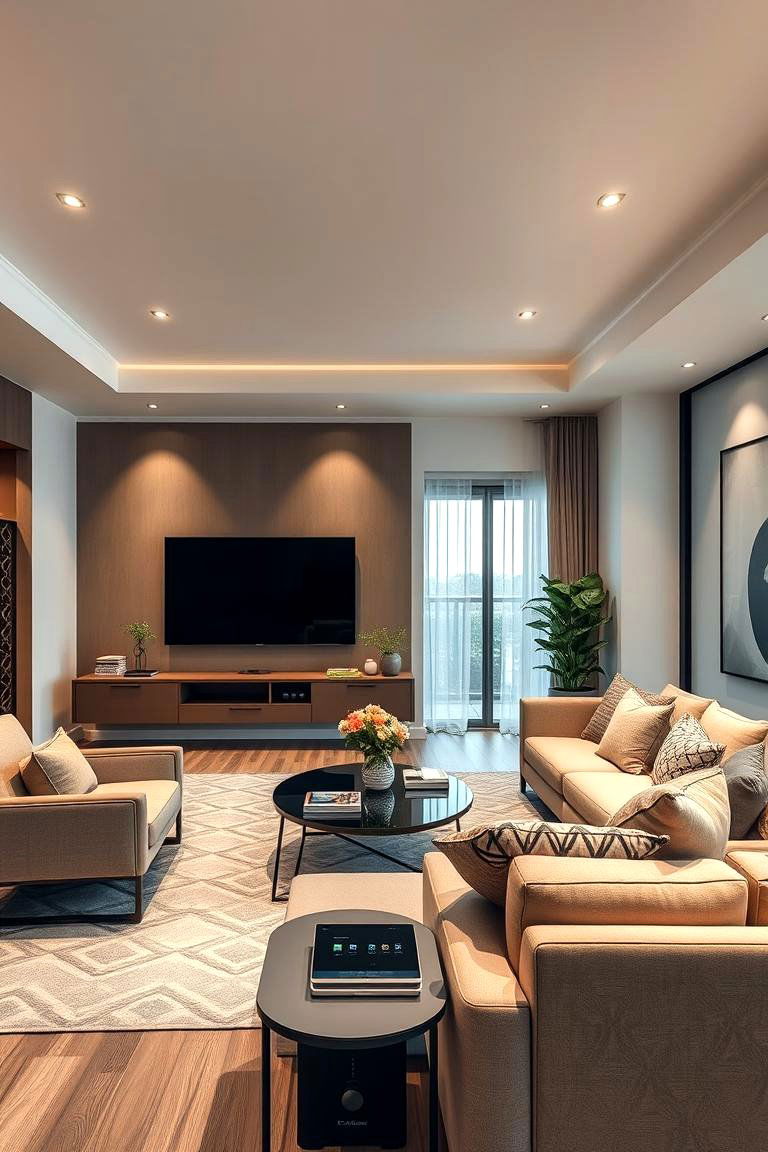
With smart integration of technology, transitional living rooms can offer enhanced convenience and modern appeal. Sleek, hidden wiring, smart home controls, and discreet multimedia systems ensure the space remains uncluttered while delivering high-tech functionality. These subtle yet impactful features allow for seamless connectivity and entertainment without compromising the room's aesthetic. The blend of advanced technology with classic design elements creates an environment where modern convenience meets timeless sophistication, elevating everyday living.
22. Adaptable Multi-Functional Spaces
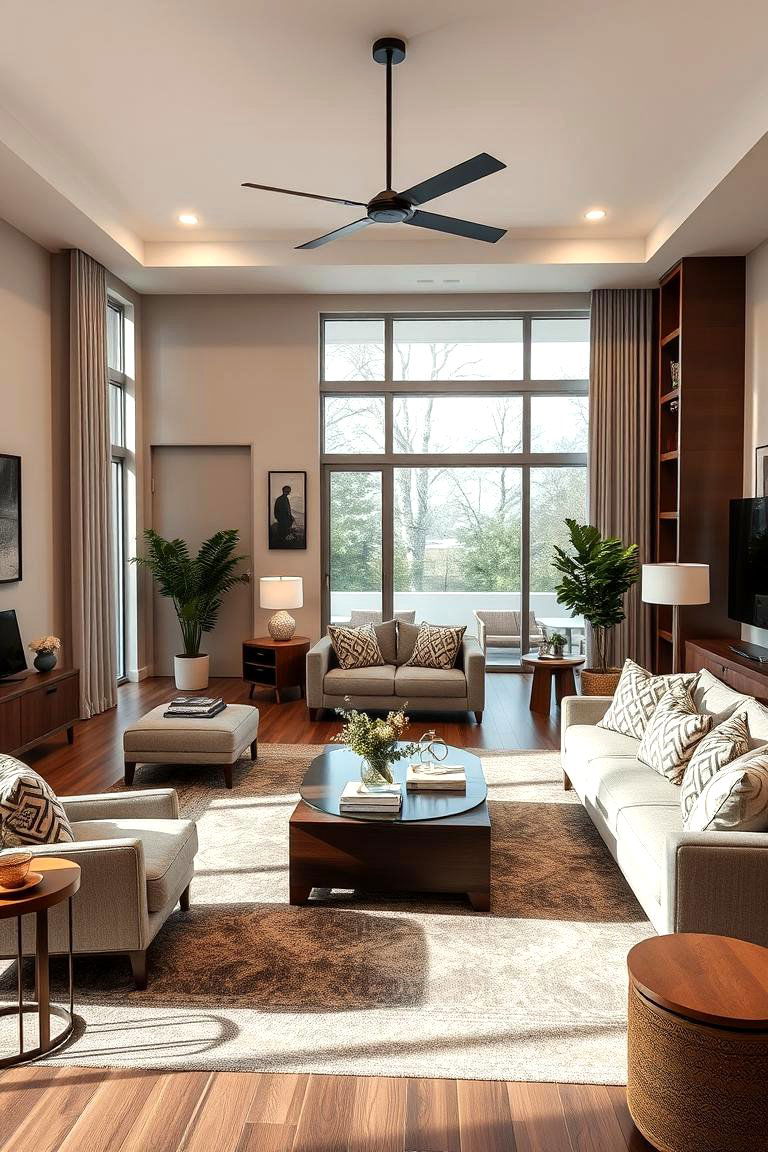
In a world that values flexibility, adaptable multi-functional spaces redefine the transitional living room. Designing areas that serve multiple purposes—from casual lounging to work and entertainment—ensures every square foot is utilized efficiently. This approach allows seamless switching between activities, creating a dynamic environment tailored to your lifestyle. Multipurpose furniture and smart storage solutions enhance functionality without sacrificing style, resulting in a living room that evolves with your changing needs while remaining comfortable and inviting.
23. Inviting Window Nooks
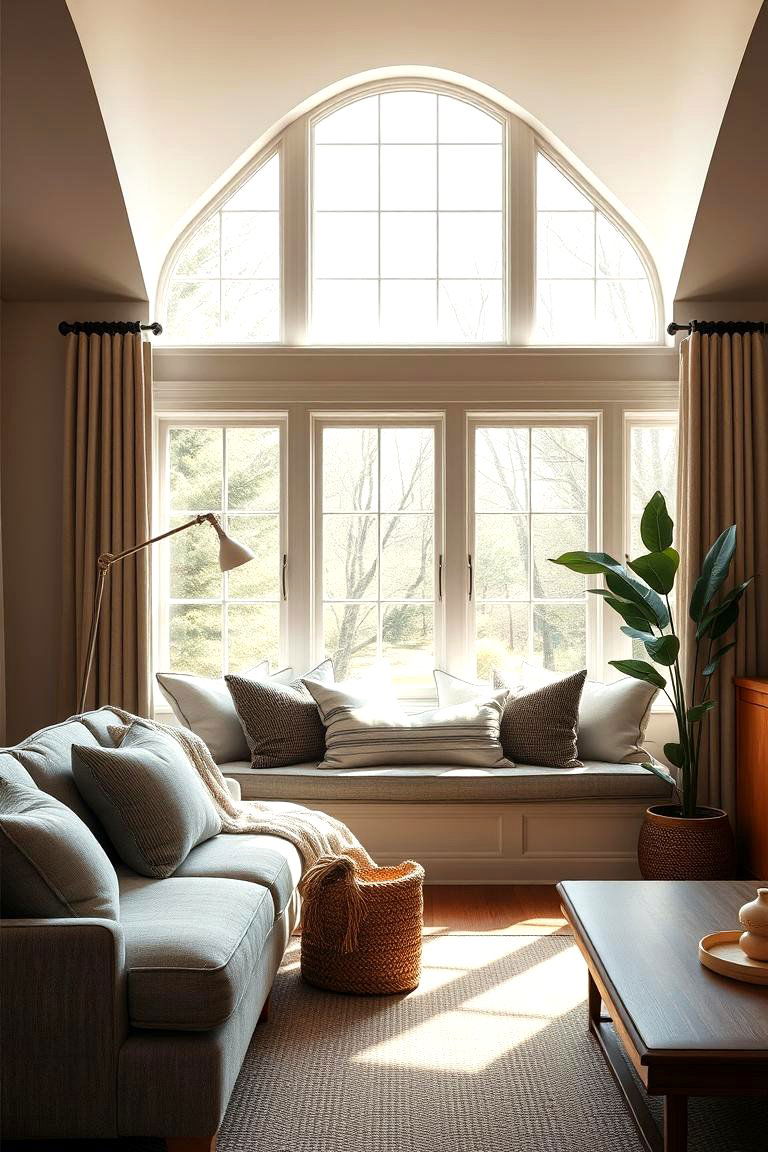
What could be more charming than inviting window nooks that add a cozy touch to your transitional living room? These dedicated spots offer a perfect retreat for reading, daydreaming, or enjoying a quiet cup of coffee. Bathed in natural light, a well-designed window nook creates an intimate atmosphere that enhances the room’s overall appeal. Furnished with a comfortable bench, soft pillows, and thoughtful decor, these nooks blend practicality with beauty, fostering a relaxing environment for personal reflection.
24. Sophisticated Accessory Styling
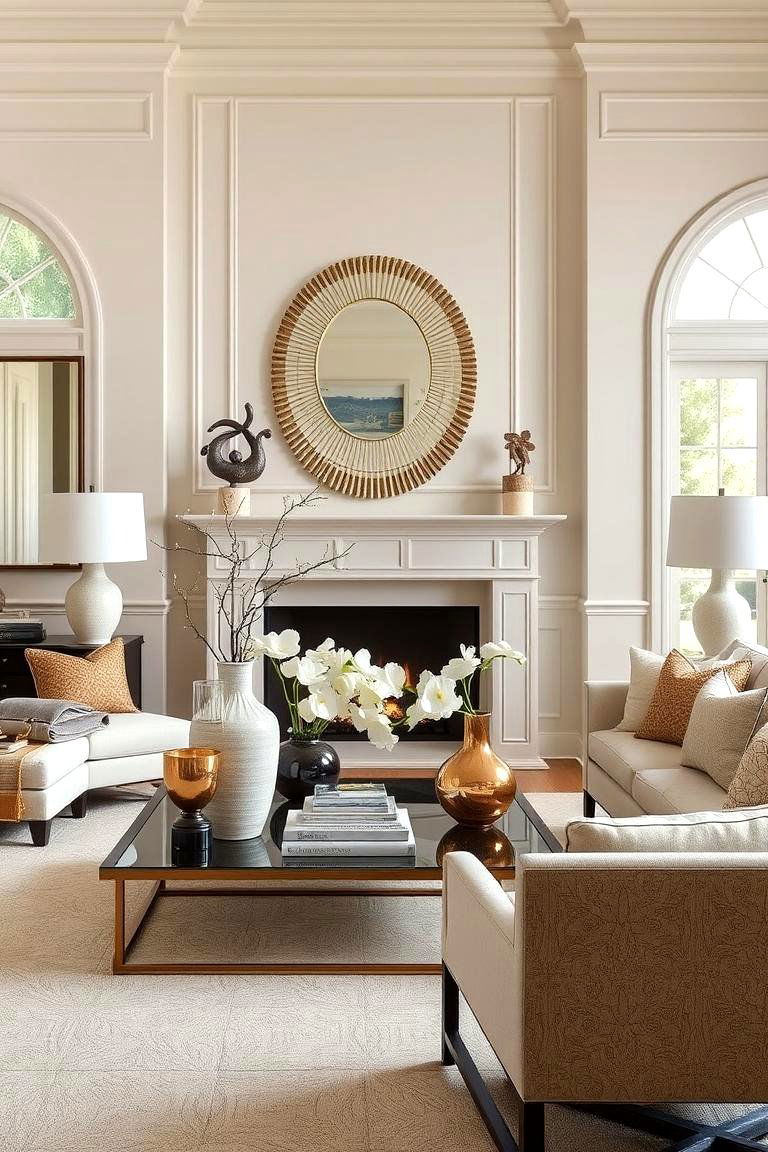
Take a creative leap with sophisticated accessory styling that refines your transitional living room. Carefully chosen decor items, such as elegant vases, mirrored accents, and subtle sculptures, enhance the room's character without overwhelming its simplicity. Each accessory is selected for its ability to add a touch of luxury and personality to the space. This approach emphasizes quality and thoughtful placement, resulting in a dynamic environment that exudes refined charm and inviting warmth, perfect for any lifestyle.
Conclusion:
Taking everything into account, transitional living room design offers a seamless blend of classic comfort and modern functionality that transforms any space into a welcoming haven. Each idea explored—from neutral palettes to sophisticated accessories—presents practical solutions to enhance both aesthetics and usability. The balanced integration of timeless elements with modern trends creates a refined environment where every detail matters. Embrace these insights to craft a living area that reflects your personal style while meeting everyday needs. Enjoy the creative journey and let these ideas inspire your next home transformation.


